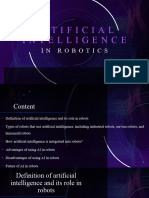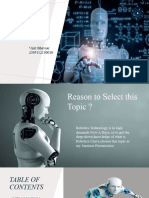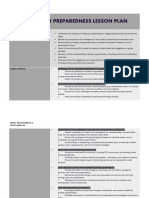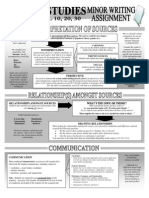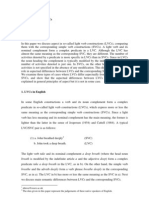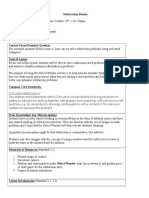0% found this document useful (0 votes)
24 views6 pagesAssignment 5
Robotics is an interdisciplinary field focused on the design and operation of robots that perform tasks requiring human-like intelligence. Key types of robots include industrial, service, autonomous, humanoid, and social robots, with applications spanning manufacturing, healthcare, space exploration, military, and agriculture. The future of robotics is driven by advancements in technologies such as artificial intelligence, machine learning, and computer vision.
Uploaded by
priyanshag9999Copyright
© © All Rights Reserved
We take content rights seriously. If you suspect this is your content, claim it here.
Available Formats
Download as ODP, PDF, TXT or read online on Scribd
0% found this document useful (0 votes)
24 views6 pagesAssignment 5
Robotics is an interdisciplinary field focused on the design and operation of robots that perform tasks requiring human-like intelligence. Key types of robots include industrial, service, autonomous, humanoid, and social robots, with applications spanning manufacturing, healthcare, space exploration, military, and agriculture. The future of robotics is driven by advancements in technologies such as artificial intelligence, machine learning, and computer vision.
Uploaded by
priyanshag9999Copyright
© © All Rights Reserved
We take content rights seriously. If you suspect this is your content, claim it here.
Available Formats
Download as ODP, PDF, TXT or read online on Scribd
/ 6













































